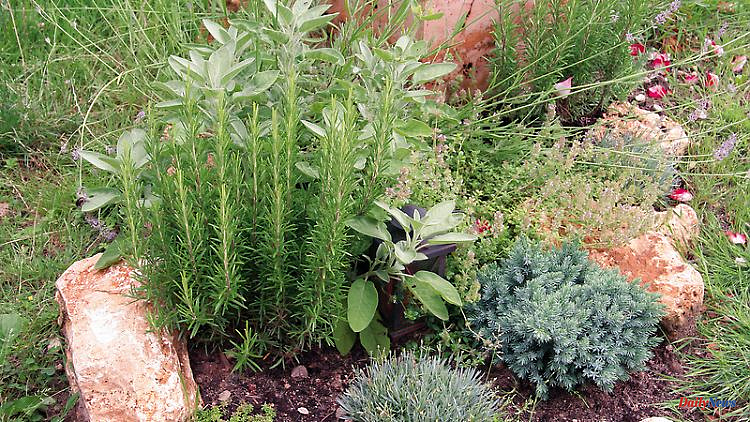Many cemeteries are often beautiful places with lots of greenery. Grave care here can be more than mourning and fulfilling a convention. It can be a break from everyday life. And even a hobby.
In the initial period after the death of a loved one, graves are primarily a place for mourning. But over time, it's not so dominant anymore. Then you go to the resting place less and less - and the regular care of the grave can be perceived as a burden.
But one can understand the cemetery and the family grave differently: not as a place for the dead, but for the living. The grave can be a small garden that you make beautiful and where you can find a break from everyday life. That is why Christoph Killgus also speaks of the grave garden.
"Whereas a large garden, which you might inherit from grandma and grandpa, sometimes becomes a burden because it takes a lot of work, such a small bed can be something affordable. And something that can be fun," says the book author and horticulturist - Engineer from Filderstadt. In his book Personalizing Graves, he even advises growing fruit and vegetables on them.
Isn't that macabre? On the contrary, Killgus thinks. Because the care of a grave area is still primarily mourning work. "This applies in a very special way in the initial period after the death." Then it is helpful for many to go to a grave with great regularity and to feel connected to the one who has died, says Killgus.
You spend time gardening there with yourself, you can think, you can cry. Some, according to Killgus, also need this reason to have to take care of the grave plants. So you can often go to the cemetery and stay at the grave for a long time without anyone asking if you are okay.
At the same time, caring for the greenery at the grave is mechanically simple work. You can easily get lost in your thoughts. And you get the feeling that you're doing something nice for the one who's gone, says Killgus. "These are all small things that help those who are in the grieving phase."
Therefore, personal items or even messages, for example on stones on the grave, can also be helpful. A kind of communication with the dead takes place over this. Killgus advises looking at children's graves as an example. Unlike the adult resting places, they are often made much more colourful, cheerful and decorated with personal items. That can be comforting.
Planting can be a more subtle way to increase intimacy with the deceased. Christoph Killgus advises relatives to plant the grave with what they like or what reminds them of the deceased in a very personal way - and not just to copy the neighboring graves. Perhaps a rosebush resembling the beloved bush in dead grandma's front yard. Or vegetables for the enthusiastic hobby gardener who was the deceased. Or recreate the logo of your favorite club with plants.
Cemetery gardeners are also increasingly designing graves with a personal touch, reports André Burmester, a member of the Association of German Cemetery Gardeners from Burg near Magdeburg. He has even created a mini water lily pond in a grave as a reminder of a deceased son. But this development is still tentative. "It's difficult to convince the mourners. They often want to continue what you've been doing for decades."
Killgus is convinced that for mourners with this very individual approach to a grave, the cemetery can be the place that leads back to life. As an author, he has dealt a lot with the culture of remembrance in cemeteries.
Over time, many mourners also go to the grave less often. It's natural when you're processing the grief. The only thing that often changes is the design of the grave, says Christoph Killgus. "After a while, many people prefer to use plants that need less care, that need less watering. That's not a bad way. It's just the way things are going."
But even then there is still the chance to see the cemetery and the family grave with different eyes - not as a burden that you have to take care of regularly in your already stressful everyday life, but as a place for a break.
"Cemeteries are often wonderful parks and green spaces - and places of rest. They usually have benches," says Killgus. "You can go to the cemetery for a break. Either you just sit there, enjoy the green surroundings and close your eyes. Or you have a book with you and read for half an hour."












